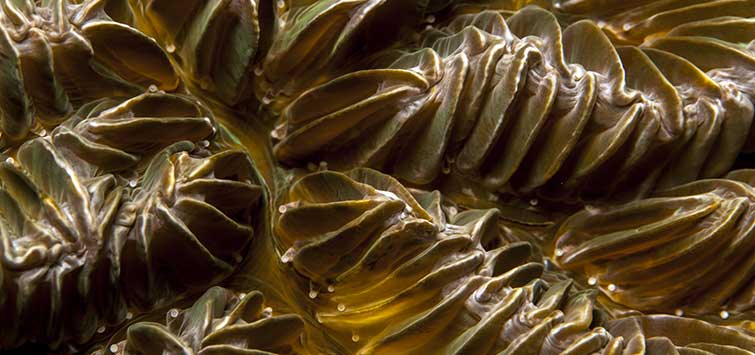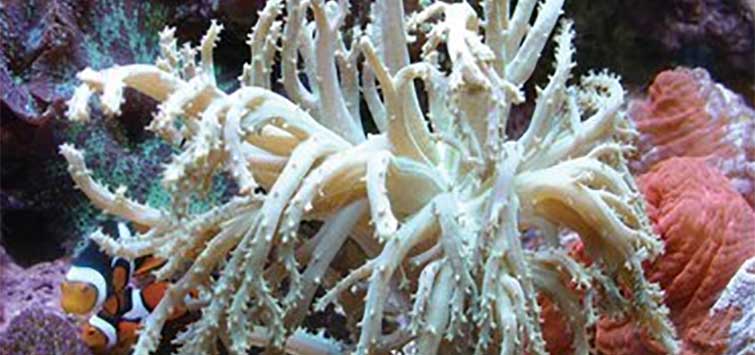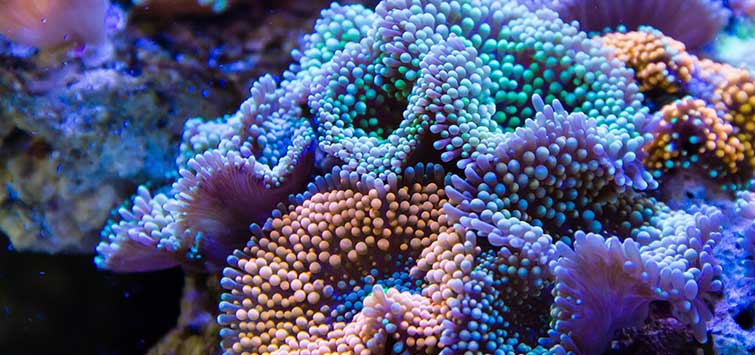Meandrina meandrites
Common Names: Brain coral, butterprint brain coral, maze coral
Phylum: Cnidaria
Class: Anthozoa
Order: Scleractinia
Family: Meandrinidae
Range: Tropical West Atlantic, Gulf of Mexico, and the Caribbean
Natural Environment: This photosynthetic stony coral is usually found in reef-like environments where its colonies take on massive, columnar, or free-living forms with meandroid corallites. It is usually seen in light brown or gray colors.
Water Requirements: Calcium 380 to 430 ppm, alkalinity 3.5 meq/l, pH 8.1 to 8.2, specific gravity 1.024 to 1.026, NO3 < 15 ppm, Mg approx. 1272 ppm, phosphate < .015 ppm, and a temperature range of 75° to 83°F (24° to 28°C).
Captive Care
The specimen in the photograph came into a local shop in the western United States from a dealer in the southern Florida area who ships only Caribbean species. It was simply labeled as “brain coral.” This rare species in the trade—which also has a somewhat rare column projection—is an extremely hardy and disease-free stony coral. It would do best where it could receive good lighting, preferably from metal halide lamps in the range of 4 to 6 watts per gallon, and moderate water movement.
There is not a lot of captive care advice about this photosynthetic stony coral species available yet. In the wild it forms colonies with wavy corallites, often seen as thick plates covering rocky areas, which occur in clear waters where currents keep the areas free from accumulating debris and/or sand particles. Based on this information, along with the fact that it inhabits fairly shallow reef environments, it should be obvious that quality water, good lighting, and fairly good water movement would enhance its survival rate in captivity. I would also think that it does not require any special hand-feeding, and it would benefit from having sufficient space between it and other corals in the aquarium, since its aggressiveness is not a widely determined factor.
As with many stony corals, water quality is an important issue; I highly recommend alkalinity and calcium levels be carefully monitored and maintained near natural seawater levels, and that phosphate levels be kept near or below the recommended levels.

.png?h=595&iar=0&w=2781&hash=5FD5E69473BCC22199FBFA2FB71B6033)



